
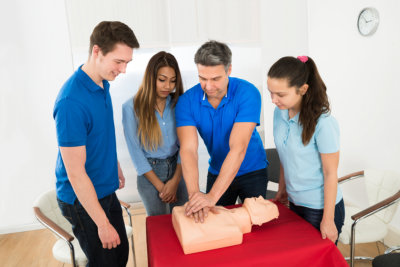
Adult First Aid
Our Adult First Aid aims to teach those who need to be qualified in first aid as they respond to most medical emergencies for adults, including cardiac arrest and choking, as well as sudden injuries and illnesses.
Click Here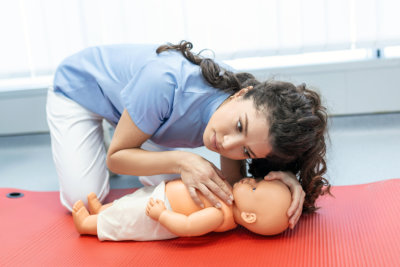
Pediatric First Aid
Our Pediatric First Aid aims to teach those who need to be qualified in first aid as they care for babies and children in a professional setting.
Click Here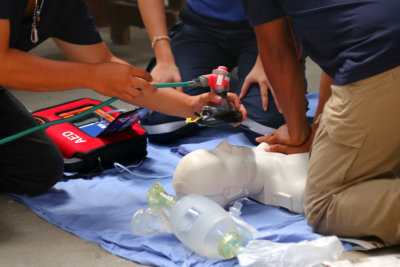
CPR/AED All Ages
The CPR/AED course teaches students how to respond to breathing and cardiac emergencies to help victims of any age, including adults and infants.
Click Here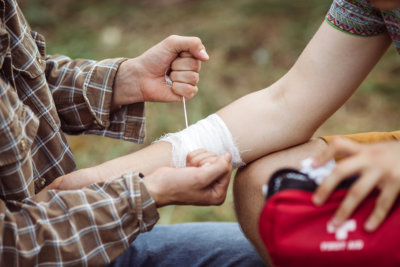
Wilderness First Aid (WFA)
With this course, you will learn how to evaluate a patient, be well-versed in wilderness first aid, and learn both basic patient assessment and how to treat a variety of medical conditions.
Click Here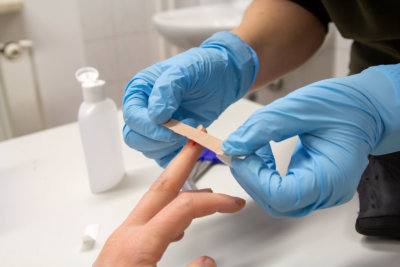
Bloodborne Pathogens (BBP)
This training is designed for employees whose duties put them at risk for occupational exposure to bloodborne pathogens and other bodily fluids in the workplace in compliance with the OSHA Bloodborne Pathogens Standard.
Click Here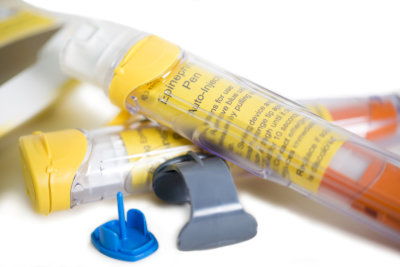
Use and Administration of Epinephrine Auto Injections (EAI)
Epinephrine is a drug that can slow down or stop an anaphylactic reaction. This course will teach you the signs and symptoms of anaphylaxis and how to administer epinephrine using an auto-injector device.
Click Here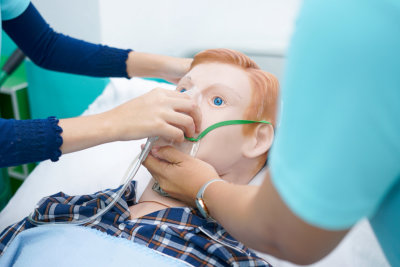
Oxygen
This course aims to teach oxygen (O2) administration, equipment, and procedures for administrating oxygen as an emergency procedure.
Click Here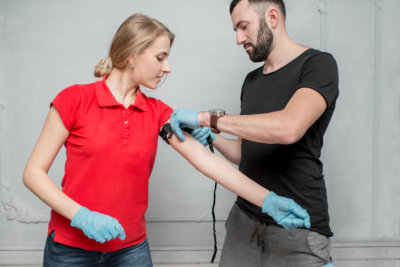
Advanced Bleeding Control
Upon completion of this training, you will be able to provide lifesaving bleeding control for injured persons until medical professionals and first responders can arrive.
Click Here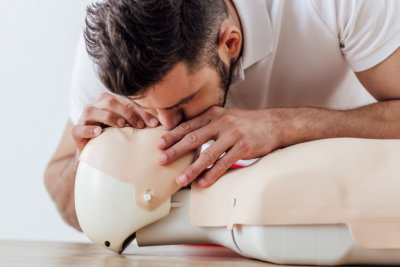
High-Performance CPR
Our high-performance CPR training will help students learn about the science behind high-performance CPR, key metrics, and how to perform HP-CPR during a resuscitation call.
Click Here
Child & Babysitting Safety (CABS)
We will offer the "Child & Babysitting Safety" Program for the youth starting at the age of 11 years old. This program will consist of the following:
Click HereAdult First Aid
Topics may include:
- Recognizing an emergency
- Sudden cardiac arrest
- Emergency moves
- Primary Assessment – Unresponsive and responsive persons
- Choking
- Control of bleeding
- Shock
- Head, neck, or back injury
- Burns
- Stroke
- Poisoning
Pediatric First Aid
Topics may include:
- Role of the pediatric first aid provider
- Recognizing an emergency
- Legal considerations
- Choking
- Primary assessment
- Control of bleeding
- Shock
- Head, neck, or back injury
- Burns
- Poisoning
- Environmental emergencies
CPR/AED All Ages
Topics may include:
- Introductory CPR & First Aid Training
- Medical Emergencies
- Universal Precautions
- Cardiac Arrest Training
- Adult, Child, Infant CPR
- AED Training
- Hands-Only CPR
- Choking Training
Wilderness First Aid (WFA)
Topics may include:
- Learn the Basic Life Support and Patient Assessment System
- How to provide effective first aid treatments for injuries and illnesses common in the outdoors
- How to make appropriate evacuation decisions
- Dressing wounds, stopping bleeding, and tying tourniquets
- Creating splints and assessing for bone breaks
- Hypothermia wraps
- Improvised neck braces for spinal injuries
- Drowning rescues
- Communicable diseases
- Getting Lost and Rescue Signaling
Bloodborne Pathogens (BBP)
Topics may include:
- How bloodborne pathogens are spread
- How to avoid exposure
- What to do if exposed to infectious material
- How to protect workers from occupational exposure to hepatitis B virus (HBV), hepatitis C virus (HCV), human immunodeficiency virus (HIV), and other bloodborne pathogens.
Use and Administration of Epinephrine Auto Injections (EAI)
Topics may include:
- Teach the signs and symptoms of anaphylaxis
- Understand what steps to take.
- How to care for a person having a severe allergic reaction
- How to administer epinephrine using an auto-injector device
- The proper way to use your epinephrine injection or a USP auto-injector.
- How to monitor the individual's condition
Oxygen
Topics may include:
- Emergency oxygen defined
- Types and uses of oxygen equipment
- Oxygen delivery devices and how to use them
- General guidelines for the use of emergency oxygen
- Risks associated with oxygen delivery
- Oxygen safety and storage
Advanced Bleeding Control
Training topics may include:
- Severe External Bleeding
- Physiology of Bleeding
- Direct Pressure
- Use of Pressure Bandages
- Use of Tourniquets
- Wound Packing Dressing
- Caring for Severe External Bleeding & Shock Treatment
- Hands-On Skill Practice
High-Performance CPR
The main areas of focus of high-performance CPR training include:
- Learn the science behind resuscitation and therapeutic hypothermia
- Implement "High Performance" CPR techniques
- Develop an action plan for EMS response to cardiac arrest
- Understand how dispatcher-assisted CPR improves bystander response
- Learn how to perform chest compressions at the optimal depth and rate
Child & Babysitting Safety (CABS)
The Child & Babysitting Safety Class is a community education program designed to teach youths ages 11 and older basic care techniques and child safety for infants and children. This class is a hands-on program where the participants can practice their infant care skills on dolls and mannequins, as well as other babysitter activities. The four-hour class can be taught as a one-day seminar (including lunch or snacks, which they should bring) or can be divided into two sessions every 2 hours. Upon completion of the course, participants will receive a Babysitting Certificate and Pediatric CPR participant card.

